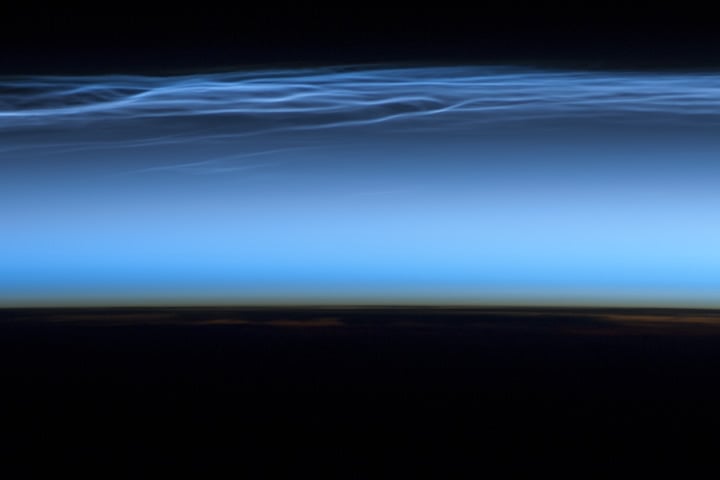Mysterious "night shining" or noctilucent clouds are beautiful to behold, and this stunning image offers an unusual view of these clouds as seen by astronauts on board the International Space Station. Also called polar mesospheric clouds, these clouds are puzzling scientists with their recent dramatic changes. They used to be considered rare, but now the clouds are growing brighter, are seen more frequently, are visible at lower and lower latitudes than ever before, and sometimes they are even appearing during the day.
The astronauts were also able to take a time-lapse sequence of these clouds on June 5, 2012, as seen below. According to NASA, it is first such sequence of images of the phenomena taken from orbit.
The sequence in this video was taken while the ISS was passing over western Asia. By focusing on the limb of the Earth at night with the Sun illuminating it, the crew was able to capture some movement to these mysterious clouds.
There is quite a bit of debate for the cause of noctilucent clouds. Dust from meteors, global warming, and rocket exhaust have all been tagged as contributors, but the latest research suggests that changes in atmospheric gas composition or temperature has caused the clouds to become brighter over time.
Noctilucent clouds are usually seen during the summertime, appearing at sunset. They are thin, wavy ice clouds that form at very high altitudes (between 76 to 85 kilometers (47 to 53 miles) above Earth's surface and reflect sunlight long after the Sun has dropped below the horizon. They appear in both the Northern and Southern Hemisphere and appear as delicate, shining wispy clouds against the dark sky.
The top image from the ISS was taken on June 13, 2012, as the space station passed over the Tibetan Plateau. At the same time, polar mesospheric clouds were also visible to aircraft flying over Canada. In addition to the noctilucent/polar mesospheric clouds trending across the center of the image, lower layers of the atmosphere are also illuminated. The lowest layer of the atmosphere visible in this image—the stratosphere—is indicated by dim orange and red tones near the horizon.
Lead image caption: Noctilucent or Polar Mesospheric clouds captured by the crew of the ISS on June 13, 2012. Credit: NASA
Source:
NASA Earth Observatory
 Universe Today
Universe Today
